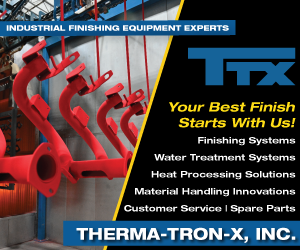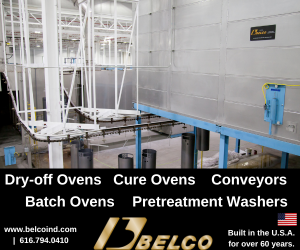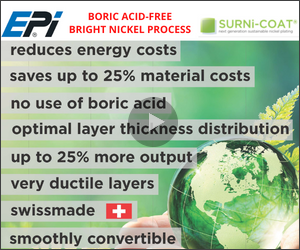Masking Solutions for Medical Applications
Sponsored ContentAccording to Custom Fabricating and Supplies, a cleanroom is ideal for converting, die cutting, laminating, slitting, packaging and assembly of medical-grade products.
Share
Read Next
Coating of medical applications requires a high level of precision and cleanliness. Proper masking and the use of clean rooms are some of the ways you can control your process.

The ISO 7 class 10,000 clean room at CFS features temperature and humidity control in a permanent, hard-walled facility. Machine technology in the clean room offers digital variable data printing for specialized die cut parts used in masking or die cuts for medical, health and beauty, pharmaceutical and electronics applications. Source (all photos): Custom Fabricating & Supplies
Masking
Masking is the process of protecting specific areas of a part during any coating process. It may also guard the part from contamination, damage or moisture during the assembly and shipping process. This can be done with standard masking products or those that are customized for the application, which is common for products produced for the medical, health and beauty, as well as electronics and lighting industries.
Standard types of masking products include caps, plugs and kiss cut or die cut tape. Conversely, a custom mask may be created to suit the unique characteristics and dimensions of a product. This type of curated approach is a practical route for very specific items (such as wound care products, films, surgical drapes, skin patches or electrodes) and is especially useful in cases where the unit may be ordered repeatedly over time.
Cleanroom production
Numerous medical and related applications often require a dedicated and verified clean space to guard against moisture and air particles, which can be detrimental to the end product. For example, if adhesives and flexible materials are exposed to airborne particles or moisture, this can reduce the strength of the adhesive and may ruin the effectiveness of products applied directly to the skin. A clean room helps to safeguard the process by controlling air pressure, dust, humidity and even temperature.
ISO 7 certification, also known as Class 10,000, states the maximum particle count must not exceed 352,000 air particles (0.50 microns in size) per cubic meter. To put this in perspective, ordinary room air contains at least 35 million particles per cubic meter, making cleanroom manufacturing over 100 times cleaner.
Cleanroom manufacturing is 100x cleaner than ordinary rooms.
At CFS, a clean room is in place for projects that must be produced in a highly controlled environment. This dedicated, temperature-controlled space is equipped with an industrial dehumidifier to remove moisture and a separator filter dryer (SFD), which separates dirt and air particles, filters the air, and removes any moisture, producing high-quality, hospital-grade air that is needed for not only medical but also numerous other applications.
Getting the right cut
A clean room is ideal for converting, die cutting, laminating, slitting, packaging and assembly of medical-grade products. Multilayer lamination

Converting services for the medical industry include die cutting and material slitting.
often requested by medical customers, as well as zoned adhesive and island placement, are all possible with the technology in a clean room.
For example, the machine technology we use in the clean room at Custom Fabricating & Supplies, the Delta ModTech Crusader, enables us to offer not only printing but also die cutting for a range of customers in the medical, electronics and pharmaceutical sectors.
Some of the materials used for the medical industry include microporous hydrophobic PFTE and PES membranes, medical-grade foams, tapes and silicone rubber, polyimide tape die cuts and woven and nonwoven biocompatible pressure-sensitive adhesives.
For all applications, the product development process starts with a discussion with the customer about the primary goals of the project, followed by review of their CAD files and associated specifications. An internal CAD file is created to correctly model the part and call out all relevant details (tolerances, dimensional information, material type, part number). A prototype of the custom mask is also normally produced for approval and to ensure the part fits and performs as expected before it goes into full-scale production.
Medical and more

Examples of custom die cut products for the medical industry include filtration products, skin contact adhesives for tapes or medical wearables, and non-latex rubber molded components.
Clean rooms are necessary for many types of industries, and specifically where small particles can affect the manufacturing and quality of the product or assembly. Clean room die cutting can be required for biotech, electronics, medical device, pharmaceutical and semiconductor applications where high levels of cleanliness and sterility are required.
About the Author

Henry Asik
Henry Asik is vice president of Custom Fabricating & Supplies. Visit customfabricate.com.














.jpg)



